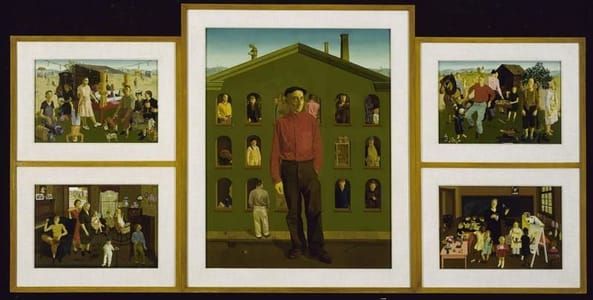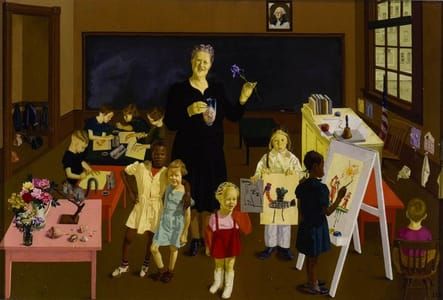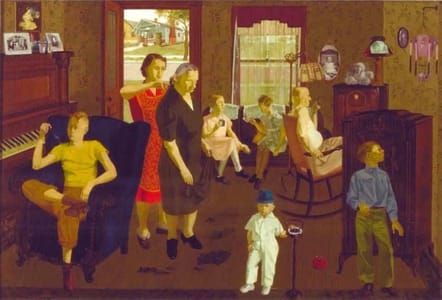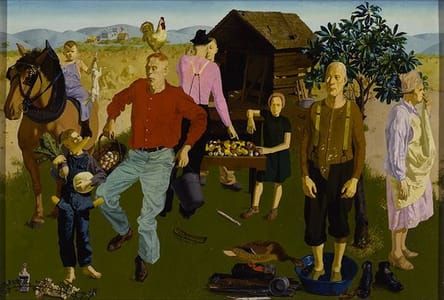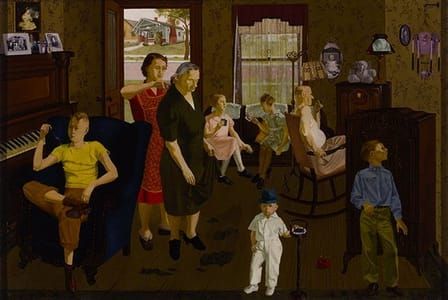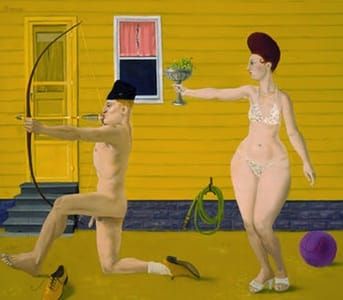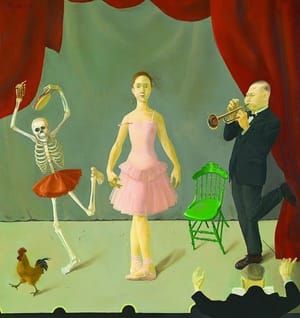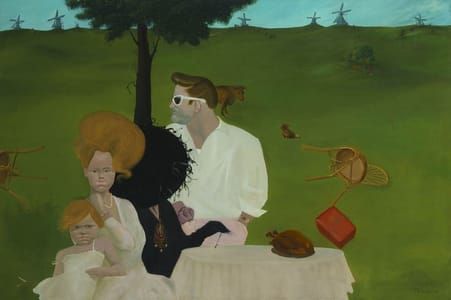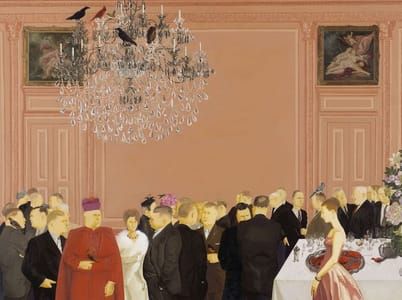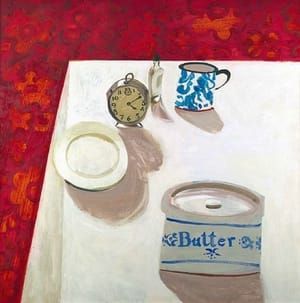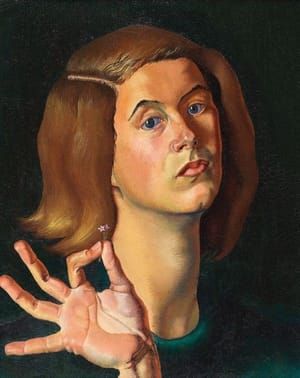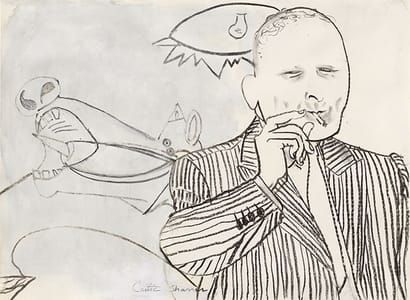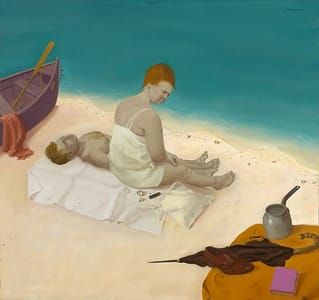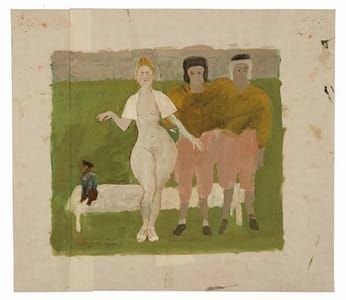

Tribute to the American Working People, 1951
Honoré Sharrer
Sharrer first received public acclaim in 1950 for her painting Tribute to the American Working People, a five-image polyptych conceived in the form of a Renaissance altarpiece, except that its central figure is a factory worker and not a saint. Flanking this central figure are smaller scenes of ordinary people—at a picnic, in a parlor, on a farm and in the schoolroom. Meticulously painted in oil on composition board in a style and color palette reminiscent of the Flemish masters, the finished work is more than 6 feet long and 3 feet high and took her five years to complete. It was the subject of a 2007 retrospective at the Smithsonian Institution and is part of the permanent collection of the Smithsonian American Art Museum.
[https://en.wikipedia.org/wiki/Honoré_Desmond_Sharrer]
"In this picture I painted ordinary people . . . it is these distinguished-undistinguished players that moved and interested me." Artist's statement, 1979
For Tribute to the American Working People, Sharrer, who was employed as a shipyard welder during World War II, employed the polyptych format of medieval Italian religious paintings in which a central panel features a saint and smaller flanking panels depict events in his life. Here the “saint” is recreated as a series of factory workers. The side panels---showing a county fair, a schoolroom, a barnyard scene, and the parlor of a modest home---are drawn from the fabric of American life. The people---whether wearing hair curlers or dancing a jog---are shown simply in the act of living, revealing Sharrer’s hope “to express a sense of humanity.”
Honoré Sharrer's Tribute questions the future of working people in post--World War II America. The five-panel composition recalls medieval altarpieces, which often show an image of a saint surrounded by illustrations of his or her life. Here, the "saint" is a typical working man, who stands in front of a 19th-century factory with the faces of his workmates peering through arched windows behind. The framed design repeats this pattern of windows, as if we are looking from one factory building to another.
[https://americanart.si.edu/artwork/tribute-american-working-people-22235]
Uploaded on Dec 15, 2017 by Suzan Hamer
Honoré Sharrer
artistArthur
Wait what?
